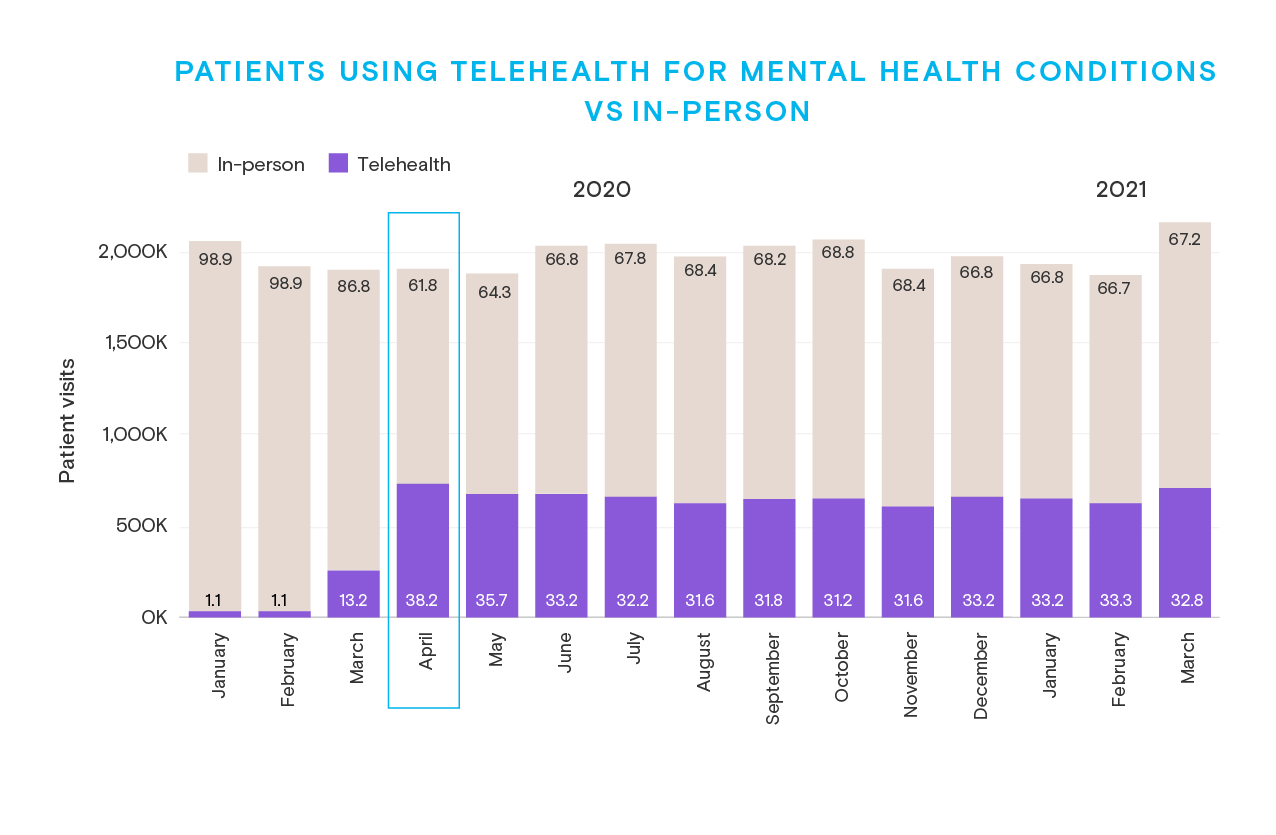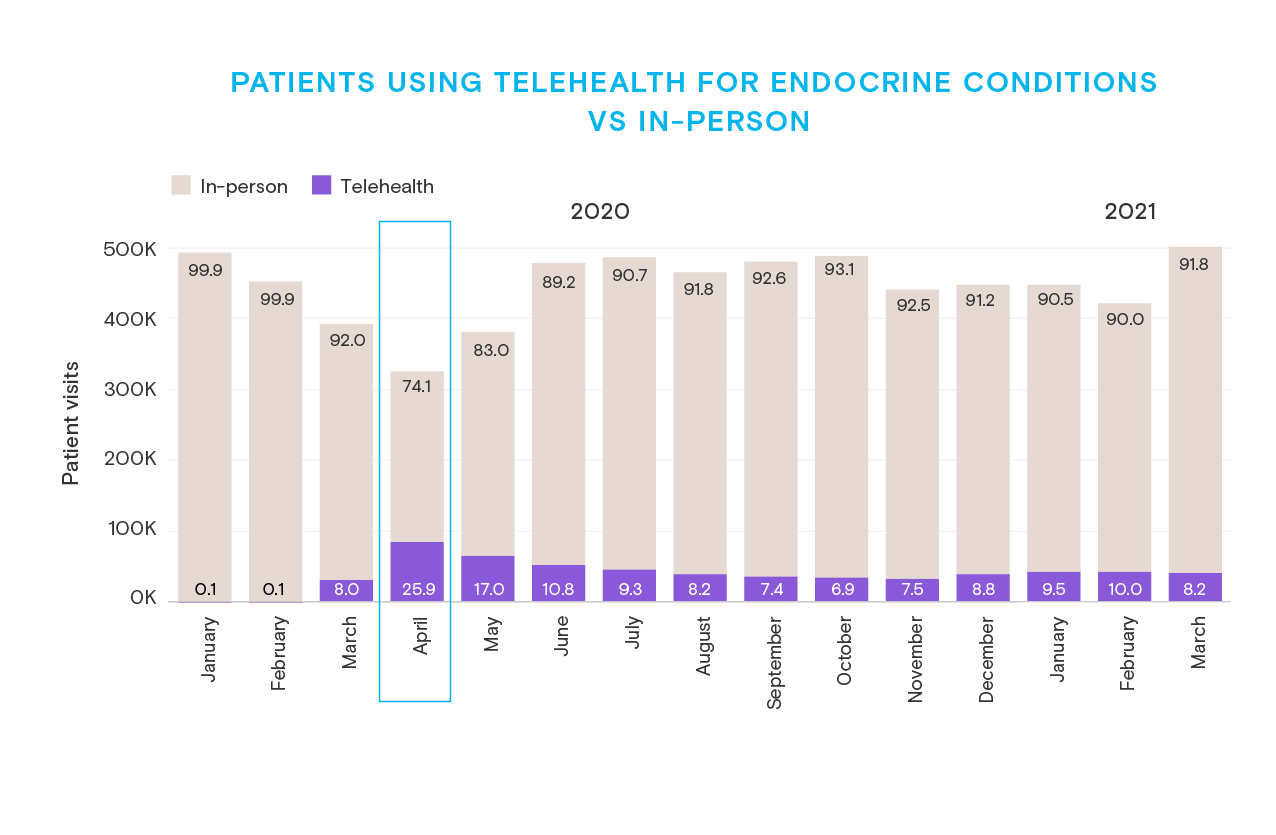While COVID-19 dramatically changed how patients engaged with their providers, the rapid deployment of telehealth services demonstrated two key attributes of the healthcare landscape.
First, providers were able to communicate and collaborate at a global level to deliver care in a world where everyone was confined to their house. And second, patients were—and still are—eager to explore new ways to receive care and connect with their doctors.
Telehealth services are nothing new. It’s been available for years before the pandemic. But it wasn’t until COVID-19 that we saw such a considerable expansion. Now nearly two years since the pandemic began, we can look back at how patients have used telehealth services and make some projections for its future.
Using healthcare commercial intelligence from our database, let’s explore the use of telehealth in two specialties and the broader role it plays in the doctor’s toolbox.
Mental health and chronic conditions
Like most specialties prior to the pandemic, mental health care delivered by telehealth was extremely low. From our data in the chart, we can track how telehealth use accelerated from February to March and April 2020.
Using telehealth services and other virtual care options to treat mental health conditions presents three clear benefits to patients.
- A phone or video call offers a safe, private, effective and engaging environment for patients and physicians.
- Telehealth may help alleviate the stress and anxiety of patients felt by the stigma surrounding mental health. People who would feel otherwise reluctant or uncomfortable to discuss their condition in person may find it easier in their own homes to get the care they need.
- Telehealth is an accessible, convenient care option for everyone but may be especially useful for patients with severe neurological conditions or physical limitations.
We can see a similar trend when looking at patients using telehealth to treat endocrine conditions. As the chart on mental health above, there was a spike in patient visits in early 2020.
However, we can also see a general decline in usage over 2020. While there are many factors that could contribute to this dip, it could be likely that patients were realizing that there were other options they could use to receive care.
Dialysis treatment, for example, requires a skilled technician and machinery, which is obviously beyond the capabilities of telehealth. Patients could instead receive dialysis by going to a care center or having an in-house visitation. This behavioral trend could signal that telehealth usage is simply one step in the patient’s care journey, serving as a point of first contact with a doctor or for regular check-ins.
Proven to work, but not the only solution
We can see similar patient patterns in our data across a variety of healthcare specialties. Though most patients with a phone line or an internet connection can use a telehealth service, telehealth isn’t a catch-all solution.
It may not be replacing the traditional visit to the doctor’s office, but it does tell us one important thing:
The healthcare world is going to look a lot more hybrid in the future.
Hybrid healthcare is an idea that healthcare providers will need to rethink their care strategy to treat the patients where they are, in the manner that’s right for them. It means leveraging new tools, methods and places to provide care. And telehealth is a perfect way for doctors to start adapting to the changing landscape.
In specialties where telehealth may not be a viable care option, it can still support and complement other forms of care delivery. Audiology, dermatology and ophthalmology, for example, don’t lend themselves well to telehealth. They simply require the doctor and patient to be near each other or involve complex devices to carry out an examination.
But the service could still be involved at key steps. The first visit could be made safely in person so the doctor could properly diagnose and build that all-important doctor-patient relationship. From there, telehealth could be conveniently relied on for regular check-ins, as an open space to address any concerns or answer questions, or to perform simple tests.
The interest and demand for telehealth are there. Now it’s up to healthcare providers to use it effectively. The exciting question is: what comes next?






